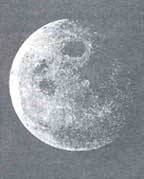The heat of the moon
The heat of the moon

SINCE time immemorial, people have believed that the moon influences Earth's climate. Although many such beliefs remain unsubstantiated, very recent research by a group of American climatologists shows a significant emperical relation between lunar phases and daily temperatures on Earth over the past 15 years (Science, vol 1267 no 5203).
Robert C Balling Jr and Randall S Cerveny of the Center of Climatology at the Arizona State University, used a newly available data-set of daily satellite-derived, lower atmospheric global temperatures, to identify the lunar influences on planetary temperature. The daily temperature record used in this study extends from January 3, 1979, to August 31, 1994.
"We computed the lunar phase for each day coinciding with the planetary temperature record. This was determined by calculating the average angular difference between the longitudes of the moon and the sun for that day," say Balling and Cerveny.
Their results reveal a statistically significant modulation of 0.03 Kelvin in the lower atmospheric temperature of the Earth between the new moon and the full moon. These scientists found that when the moon is full the temperature on Earth tends to be higher. This, they explain, is because during the this period the sun's light reflected from the moon on Earth is the greatest and there is also an increase in infra red radiation. "Our results confirm the past suspicions of many scientists that the moon exerts a disernable influence on the short-term global temperature record", argue the scientists.







